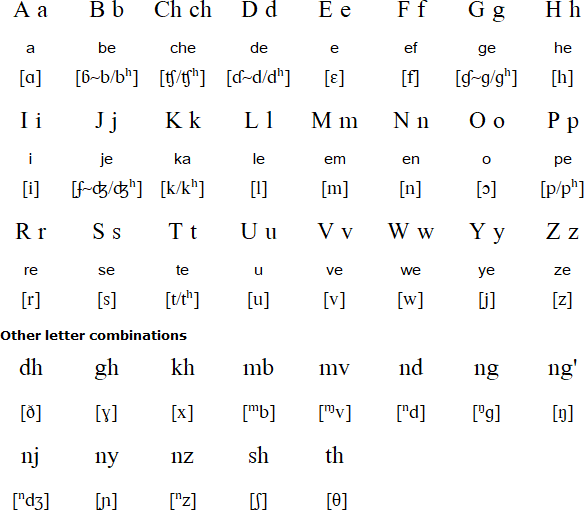Swahili Alphabet
Swahili is a Bantu language spoken in Tanzania, Burundi, Congo (Kinshasa) Kenya, Mayotte, Mozambique, Oman, Rwanda, Somalia, South Africa, Uganda, UAE and the USA. Around 5 million people speak Swahili as a native language, and a further 135 million speak is as a second language. Swahili is an official language of Tanzania, Uganda and Kenya, and is used as a lingua franca throughout East Africa.
The majority of people in Tanzania and Kenya speak Swahili as a second
language, and most educated Kenyans are fluent in the language, as it is
compulsory in schools, and also taught in universities. In the Democratic
Republic of Congo Swahili is spoken in the five eastern provinces, and
overall almost half of the population speak it. In Uganda Swahili is widely
spoken among non-Baganda people, and is taught in schools.
The name Swahili comes from the Arabic word سواحل (sawāḥil), the plural of سواحل (sāḥil - boundry, coast) and means
"coastal dwellers". The prefix ki- is attached to nouns in the noun class that includes languages, so Kiswahili means "coastal language".
Swahili includes quite a bit of vocabulary of Arabic origin as a result of contact with Arabic-speaking traders and and inhabitants of the Swahili Coast - the coastal area of Kenya, Tanzania and Mozambique, and islands such as Zanzibar and Comoros. There are also words of German, Portuguese, English, Hindi and French origin in Swahili due to contact with traders, slavers and colonial officials.
The earliest known pieces of writing, in the Arabic script, in Swaihili are letters dating from 1711, and the earliest known manuscript, a poetic epic entitled Utendi wa Tambuka (The History of Tambuka), dates from 1728. During the the 19th century Swahili was used as the main language of administration by the European colonial powers in East Africa and under their influence the Latin alphabet was increasingly used to write it. The first Swahili newspaper, Habari ya Mwezi, was published by missionaries in 1895.
Swahili alphabet (alfabeti ya kiswahili) and pronunciation









No comments